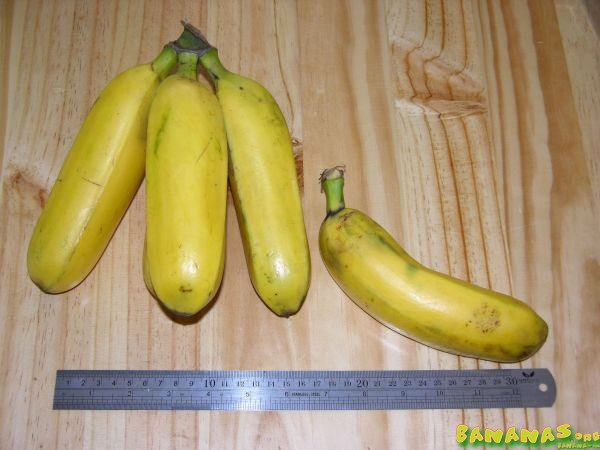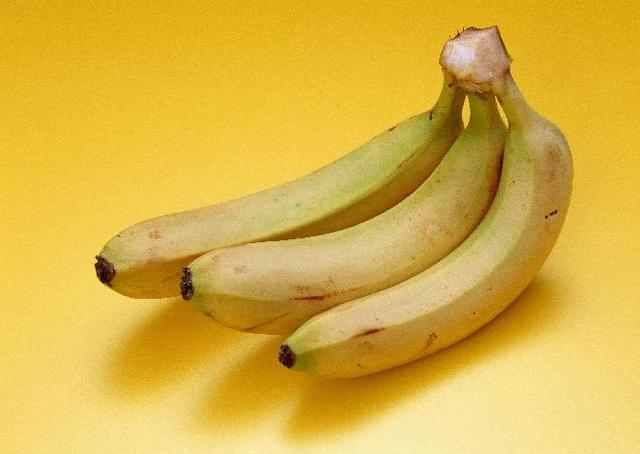재집권을 노리고 있는 고든 브라운 영국 총리가 바나나를 하루에 9개까지 먹으면서 선거유세를 준비 중(be preparing himself for the campaign trail by eating up to nine bananas a day)인 것으로 알려졌다.
일간지 데일리메일 등 현지 언론에 따르면, 브라운 총리는 건강하고 윤기나는 이미지를 만들기(make a healthy and radiant image) 위해 자신이 좋아하던 초콜릿바 킷캣 대신 많은 양의 바나나를 먹어대고(scoff a lot of banana as an alternative to his favorite KitKat bars) 있다.

고든 브라운 영국총리
브라운 총리는 오는 5월6일 치러질 예정인 총선에서(in a general elections expected on May 6) 최대 야당인 보수당을 상대로 정권 유지를 위한 힘든 싸움을 준비하고(gear up for an uphill battle to hold on to power against the main opposition Conservatives) 있다.
한편 총리실 대변인은 브라운 총리의 바나나 다이어트와 관련해 “총리가 균형잡힌 식이요법(a balanced diet)이 매우 중요하다는 생각을 갖고 있다”고만 말할 뿐 바나나에 얽힌 이야기에 대해선 부인도 시인도 하지 않고(neither deny nor confirm the banana story) 있다. “일일 단위의 적당한 과일과 야채 섭취(a proper intake of fruit and vegetable taken on a daily basis)를 해야 건강과 윤기를 얻을 수 있다(lead to good health and radiance)”는 말만 되풀이하고 있다.
브라운 총리는 직원에게 자신의 서재에 바나나가 담긴 큰 그릇을 놓아두도록 지시한 것으로 전해졌다(be reported to have ordered staff to leave a giant bowl of bananas in his study). 하지만 바나나로 인해 브라운 총리에게 문제가 생길(fall foul ot the banana) 수 있다는 지적도 나오고 있다. 너무 많이 먹으면 속이 부글거리는 것을 비롯해 원하지 않던 일부 심각한 부작용을 일으킬(cause some seriously unwanted side-effects) 수 있다는 것이다.
바나나는 탄수화물과 섬유소가 풍부하다(be high in carbohydrates and fiber). 따라서 너무 많이 먹으면 화장실에 자주 가야할 뿐 아니라 소화불량을 일으킬(lead to indegestion as well as frequent trips to the toilet) 수도 있다.

그로스 미셸 품종 바나나
이와 관련, 영국영양학협회의 시언 포터 박사는 브라운 총리에게 과도한 바나나 섭취를 자제하고 보다 균형잡힌 식이요법을 위해 다른 과일들로 대체할 것을 촉구(urge Mr. Brown to curb his intake and to replace them with other fruits for a more balanced diet)했다. 너무 많은 섬유소(too much fiber)는 위장에 문제를 일으킬(lead to gastrointestinal problems) 수 있다고 경고했다.
여하튼 바나나가 자연의 기적처럼 보일 정도로(seem like a miracle of nature) 훌륭한 과일임에는 틀림이 없다. 색깔도 좋고 영양가도 풍부해 모든 과일바구니의 가장 좋은 자리를 차지하곤(have the most favored positiion in all the fruitbowls) 한다.
바나나는 열대지방의 많은 지역에서 지극히 중요한(be vitally important in many regions of the tropics) 존재다. 바나나 나무의 여러 부위들(different parts of the plant)은 의복, 종이 및 식탁용 식기류 재료로 쓰이고(be used for clothing, paper and tableware) 있고, 과일 자체는 필수적인 주식이 되고(be an essential dietary staple) 있다.
전 세계 사람들(people across the globe)은 부드럽고 영양가 많은 바나나 과육을 향유하고(appreciate the soft and nourishing flesh) 있으며, 스낵 크기의 적당한 분량(snack-sized portions)과 숙성 정도를 나타내기 위해 색깔을 변화시키는 벗기기 쉬운 껍질(the easily peeled covering that changes color to indicate ripeness)도 마음에 들어하고 있다.
사람 손에 딱 들어오는 데다(sit comfortably in the human hand) 다닥다닥 붙은 다른 바나나들로부터 쉽게 분리되는(be readily detached from their close-packed companions) 장점도 갖고 있다. 그야말로 효율적인 인간들의 소비와 분배를 위해 거의 맞춤형으로 디자인된 것처럼 보이는(appear almost purpose-designed for efficient human consumption and distribution) 과일이다. 더 이상 행운의 과일을 상상하기 어려울(be difficult to conceive of a more fortuitous fruit) 정도다.

카벤디쉬 품종 바나나
그러나 알고 보면 바나나는 기이하고 유약한 유전 돌연변이(a freakish and fragile genetic mutant)이다. 인간들에 의한 선별적 번식의 지속적인 응용 덕분에 수세기를 생존해온(survive through the centuries due to the sustained application of selective breeding by humans) 과일이다. ‘기적적’(miraculous)인 과일이라는 바나나가 실제로는 자연이 무조건적으로 준 선물과는 거리가 멀다는(be far from being a no-strings-attached gift from nature) 얘기다.
바나나가 안고 있는 문제는 단 하나의 단어 ‘섹스’로 요약될(be summed up in a single word ‘sex’) 수 있다.
바나나 나무는 무사 아쿠미나타와 무사 발비시아나라는 두 개의 남아시아 야생 식물종의 잘못된 짝짓기에서 유래된 잡종(a hybrid originated from the mismatched pairing of two South Asian wild plant species: Musa acuminata and Musa balbisiana)이다.
무사 아무키나타는 맛없는 과육을 생산해내는(produce unpalatable fruit flesh) 품종이며, 무사 발비시아나는 즐기며 소비하기에는 씨가 너무 많은(be too seedy for enjoyable consumption) 열매를 맺는 품종이다.
그런데 밀접한 연관이 있는 이 나무들이 우연히 교잡 수분을 해서 묘목을 낳았고(occasionally cross-pollinate and spawn seedlings), 이 묘목은 혼혈 불임 바나나 나무로 자라나게(grow into sterile, half-breed banana plants) 됐다. 이 것을 1만여 년 전(some ten thousand years ago) 초기 인간 실험자들(early human experimenters)이 발견했고, 이 잡종이 유별나게 노란 색과 형언하기 힘들 정도로 앙증맞은 형태에 예기치 못한 뛰어난 맛을 가진 씨 없는 열매를 맺는다는(bear unexpectedly tasty and seedless fruit with an unheard-of yellowness and inexplicably amusing shape) 사실을 알게 됐다. 또 탄수화물과 기타 주요 영양소의 훌륭한 공급원(an excellent source of carbohydrates and other important nutrients)임이 밝혀졌다.
이 잡종 바나나 나무의 불행한 성 불능에도 불구하고(despite the hybrid‘s unfortunate sexual impotence), 영리한 농업전문가 지망자(shrewd would-be agriculturalist)들은 땅밑 줄기에서 채취한 새순 지르기와 꺽꽂이로 재배할 수 있다는(be cultivated from suckering shots and cuttings taken from the underground stem) 것을 알게 됐다.
이런 식으로 만들어진 유전적으로 동일한 자손들(the genetically identical progeny produced this way)은 여전히 불임으로 남았지만(remain sterile) 사람들의 도움으로 널리 번식되기(be widely propagated with human help) 시작했다.
그리고 이 여러 잡종과 우연한 무작위 유전적 변이의 도움을 받은 선별적 번식의 집중적이고 지속적인 과정(an intensive and prolonged process of selective breeding aided by the variety hybrids and occasional random genetic mutations)이 결국 바나나를 오늘날과 비슷한 형태로 진화시키게(evolve the banana into its present familiar form) 된 것이다.
아랍 상인들(Arab traders)은 이 새로운 과일을 아프리카로 가져갔고(carry these fruits to Africa), 스페인 정복자들(Spanish conquistadors)은 이 것들을 미주 대륙으로 전달하게(relay them onwards to the Americas) 됐다. 이렇게 해서 맛 있는 새 바나나(the tasty new banana)는 그렇지 않았더라면 불가피했던 진화의 막다른 길을 피해 갈(be spared from an otherwise unavoidable evolutionary dead-end) 수 있었던 것이다.
무성 생식의 비효율적 복제(the inefficient cloning of asexual reproduction)라는 한계를 가졌던 바나나는 초목과 해충의 끝없는 생물학적 확장경쟁에 있어 심각하게 불리한 상황에 처해(be at a serious disadvantage in the never-ending biological arms race between plant and pest) 있었다.
바나나가 특히 작물 해충과 질병에 취약하다는(be particularly prone to crop-consuming insects and diseases) 것은 이미 확실하게 정립된 사실(a well-established fact)이다. 따라서 바나나 질병의 심각한 발생(a severe outbreak of banana disease)은 유전적으로 동일한 재배지에 쉽게 확산될 수 있으며(can easily spread through the genetically uniform plantations), 결과적으로 경제를 황폐화시키고 과일바구니를 빼앗아 가게(devastate economies and deprive our fruitbowls) 될 것이다. 또 지역 소비를 위해 재배된 품종들(varieties grown for local consumption) 역시 타격을 받게 돼 열대지역에 대량 기아사태를 불러올 수도(potentially cause mass starvation in tropical regions) 있다.
바나나는 방어적인 고립 형태의 다발로 열린다(bunch in protective isolation). 이 것이 바나나에게는 터무니없이 불합리한(be preposterous) 점이 될 수도 있다. 바나나 대재앙 가능성(a potential for banana apocalypse)이 있다는 얘기다. 실제로 바나나의 과거에 그런 경우가 있었고(has already happened in the banana’s past), 다음엔 상황이 훨씬 더 심각할 수 있다는(the next time could be much worse) 것이 전문가들의 지적이다.
20세기 중반까지(until the middle of the twentieth century) 선진국들에서 팔리는 바나나 대부분(most bananas on sale in the developed world)은 그로스 미셸 품종에 속하는(belong to the Gros Michel cultivar) 것들이었다.
이 바나나들은 달고 맛있는데다 너무 빨리 상하지 않는(be sweet and tasty and do not spoil too quickly) 특징이 있어 무역 수출용으로 매우 적합(be eminently suitable for commercial export)했다.
구시대적인 사람들(old-timers)은 맛이나 편의성에서(in flavor and convenience) 그로스 미셸 품종이 지금의 최고 바나나인 카벤디쉬 품종보다도 더 뛰어났다고(Gros Michel outshines even the current top-banana, the Cavendish) 주장하기도 한다.
그러나 20세기 초부터(from the early twentieth century) 그로스 미셸 품종의 대규모 재배지(large plantations of Gros Michel)는 파나마병(病)으로 알려진 진균류 잎파리 재앙이 창궐하기 좋은(be fertile for a fungal leaf affliction known as Panama disease) 곳이 돼버렸다. 병에 걸린 작물(affected crops)은 이내 쓸모없는 초목의 썩어가는 더미로 변해버렸다(deteriorate into rotting piles of unprofitable vegetation).
이에 따라 1950년대에(in the 950s) 베트남산 카벤디쉬 품종(the Vietnamese Cavendish)이 그 구조용으로 나오게(come to the rescue) 됐다. 하지만 바나나 회사들은 재배, 저장 및 숙성 기반시설의 필요한 개조 때문에(due to the necessary changes in growing, storage and ripening infrastructure) 가능한한 오랜동안 그로스 미셸 품종의 대체를 지연(delay switching from Gros Michel for as long as possible)시켰고, 그로 인해 많은 생산자들은 파산 직전에 내몰렸다(teeter on the edge of bankruptcy).
그러나 마침내 그로스 미셸 품종이 죽어묻혀가면서(start pushing up daisies) 바나나 농장은 급격히 변해갔고(frentically reconfigure), 1960년대 중반쯤에는(by the mid 1960s) 품종 전환이 대체적으로 마무리(be largely complete)됐다. 이후 카벤디쉬 품종은 바나나의 왕이 돼 오늘에 이르고 있으며, 반면 그로스 미셸 품종은 변덕스러운 대중의 기억에서 빠른 속도로 잊혀져(be quickly lost to the fickle public memory) 갔다.
자유인
2010년 2월 10일 at 7:22 오후
자유자유 : 바나나 많이 먹으면 속이 느글느글해서.